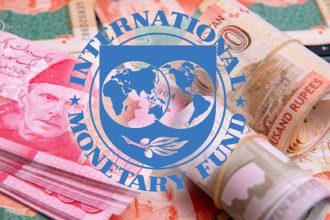As Pakistan’s foreign reserves plummet, the rupee will move in a range-bound pattern in the coming weeks.
The interbank currency declined 49 paisas last week; on Monday, the rupee closed at 224.94, and on Friday at 225.43.
The rupee is expected to be range-bound next weeks, although investors seem more concerned about foreign exchange reserves.
Analysts predict the market will watch how swiftly the government meets the IMF’s criteria to determine the rupee’s future path. As a result, REER fell to 98.8 in November from 100.2 in October.
The State Bank of Pakistan’s foreign exchange reserves fell $584 million to $6.1 billion on December 16, straining the balance of payments.
The SBP’s reserves have fallen since April 2014. Reserves cover five weeks of imports. The SBP blamed the drop on foreign loan repayments.
S&P Global lowered Pakistan’s long-term sovereign credit rating from “B” to “CCC+,” citing external risk.
Since September, the IMF hasn’t completed its ninth evaluation.
It raises concerns about fiscal slippages caused by floods and revenue shortages, particularly from the petroleum development charge. The budgeted flood rehabilitation costs have been off.
Many top investors and economists believe the IMF bailout will restart in 2023.
The govt will likely impose GST on petroleum items, remove GST immunity, raise gas pricing, and rationalize electricity tariffs, among other revenue and budget consolidation measures.
The steps may help bring the program back on track and release the next $1.2 billion in February 2023.
On the other hand, the IMF has told Pakistani officials to satisfy all requirements within 15 to 20 days to relaunch a Fund program.
The IMF has urged Pakistan to loosen its currency regulations, which have led to an illicit market for dollars and deterred foreign inflows through legal channels.
The next monetary policy could raise interest rates.






